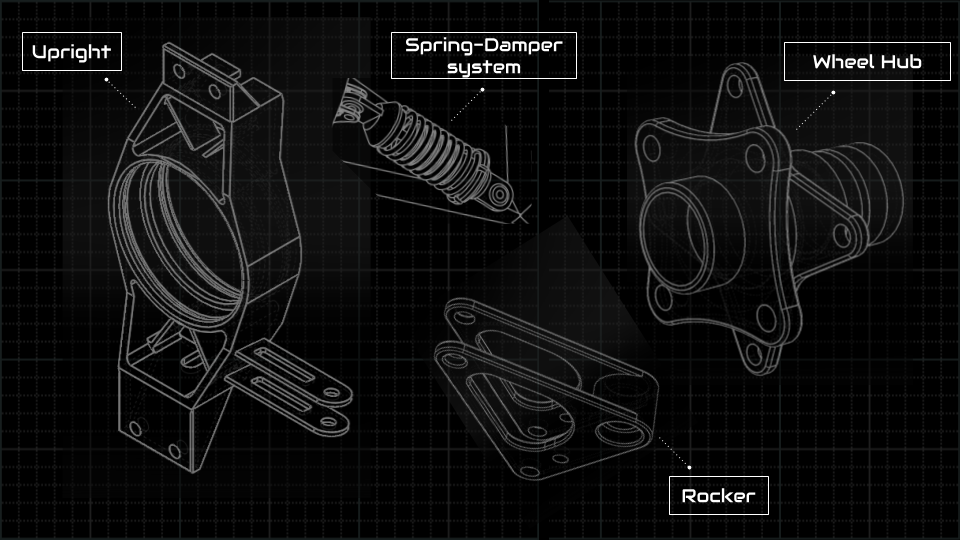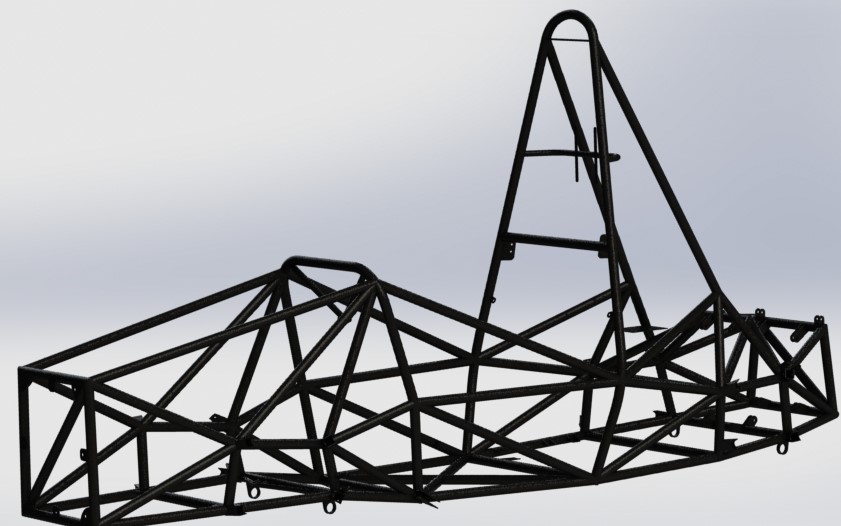In simple words, everything between the road and the car body, which is generally not supported by the springs comes inside the suspension system. All forces like acceleration, braking, turning, vibrations, etc go right through the suspension system before getting distributed to the steering and the chassis. To try to manipulate these forces and get the best out of them is the job of the suspension engineer
It is the system of components that includes:
- Tyres and rims : collectively, Wheels
- Springs and Shock Absorbers
- Hubs and Uprights
- Any other linkages that connect the wheels to the vehicle.

The suspension has several variables that affect the handling of the car in different ways. In race cars and for FSAE competitions, comfort from vibrations is generally less important than the passenger cars since our main aim is performance. Predictability of the chassis roll and of steering is important if the driver wants to push the vehicle to its limit. We can adjust the ride quality and handling by varying:

These parameters also happen to be interdependent, i.e. Changing one changes others. This is what makes precise simulation and control of suspension an important metric for a vehicle’s performance.
Our aim may not be the quickest acceleration, or the highest speed. Our aim is the optimization of everything to get the best lap-time in a racetrack. This is achieved by maximizing the contact patch of the tyre during cornering so that we get the most grip and efficient force transfer at high speeds. In engineering terms, the primary aim of suspension is to improve “traction”.
At IIT Roorkee Motorsports, we have been using the Double-wishbone type suspension for all our projects in which the left and right side suspensions are independent of each other. We design our own suspension system using Computer Aided Design (CAD) software and optimize it for our project. We frequently use softwares like DS Solid Works, ANSYS, Optimum Kinetics, ADAMS, etc, to design and test our computer models before actually moving to the manufacturing phase. The parts are then manufactured in the workshop or procured from various sources. The next stage includes the assembly and testing which is done completely by the students themselves. Testing is an important phase which lets us tune and prepare our car for the competition we are aiming for.

 The Structural Subsystem
The Structural Subsystem